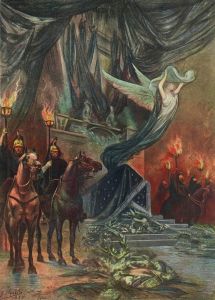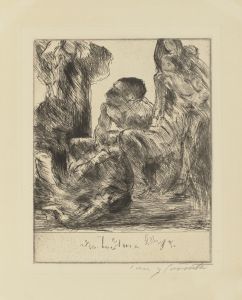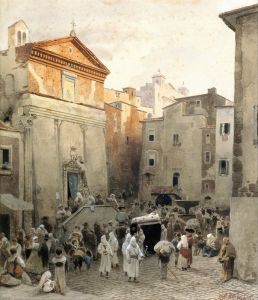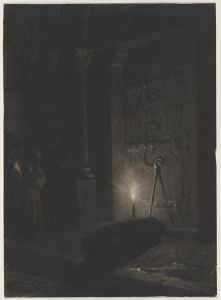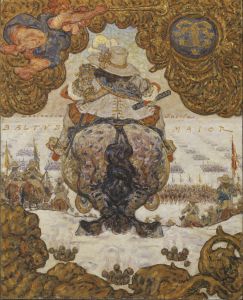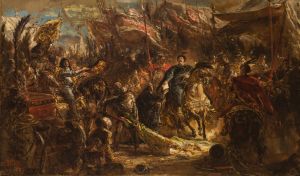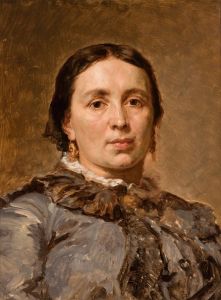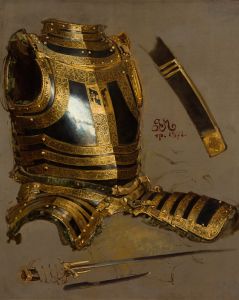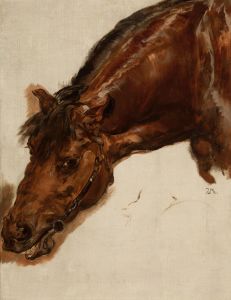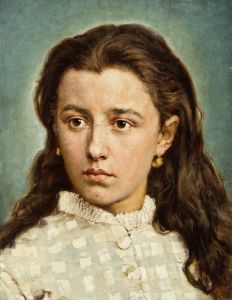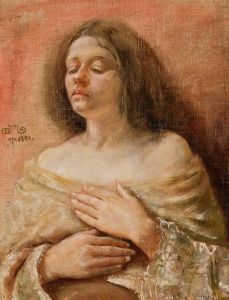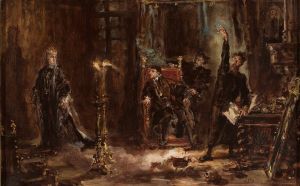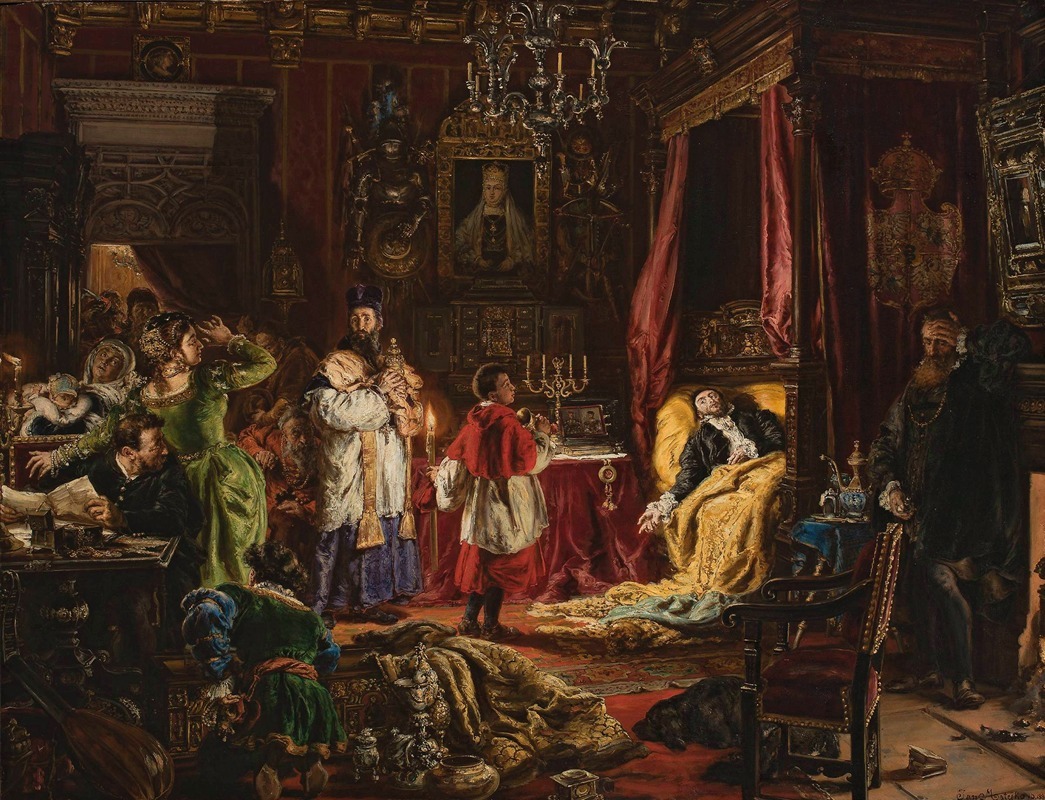
Death of Sigismund Augustus in Knyszyn in 1572
A hand-painted replica of Jan Matejko’s masterpiece Death of Sigismund Augustus in Knyszyn in 1572, meticulously crafted by professional artists to capture the true essence of the original. Each piece is created with museum-quality canvas and rare mineral pigments, carefully painted by experienced artists with delicate brushstrokes and rich, layered colors to perfectly recreate the texture of the original artwork. Unlike machine-printed reproductions, this hand-painted version brings the painting to life, infused with the artist’s emotions and skill in every stroke. Whether for personal collection or home decoration, it instantly elevates the artistic atmosphere of any space.
Jan Matejko's painting "Death of Sigismund Augustus in Knyszyn in 1572" captures a significant historical moment in Polish history, depicting the final moments of the last Jagiellonian king of Poland and Grand Duke of Lithuania, Sigismund II Augustus. This artwork is a part of Matejko's broader oeuvre, which often focused on pivotal events and figures in Polish history, aiming to evoke national pride and reflection on the country's past.
Sigismund II Augustus was born on August 1, 1520, and reigned as King of Poland and Grand Duke of Lithuania from 1548 until his death in 1572. He was the only son of Sigismund I the Old and Bona Sforza, and his reign was marked by significant political and cultural developments, including the strengthening of the Polish-Lithuanian Commonwealth. One of his most notable achievements was the Union of Lublin in 1569, which formally united Poland and Lithuania into a single state, creating a powerful entity in Central and Eastern Europe.
The painting by Matejko is set in the town of Knyszyn, where Sigismund Augustus died on July 7, 1572. This event marked the end of the Jagiellonian dynasty, as Sigismund Augustus died without an heir. His death led to a period of interregnum and the eventual establishment of the elective monarchy in Poland, which significantly altered the political landscape of the region.
Matejko's work is renowned for its historical accuracy and attention to detail, and "Death of Sigismund Augustus in Knyszyn in 1572" is no exception. The painting likely depicts the somber atmosphere of the king's deathbed, surrounded by courtiers and possibly members of the nobility, who would have been present during his final moments. Matejko's ability to convey the gravity of the situation and the impact of the king's death on the future of the Polish-Lithuanian Commonwealth is a testament to his skill as a historical painter.
Jan Matejko, born in 1838 in Kraków, was a prominent Polish painter known for his large-scale works that often depicted significant events from Polish history. His paintings are characterized by their meticulous detail, vibrant colors, and the ability to capture the emotional and historical essence of the scenes he portrayed. Matejko's works played a crucial role in fostering a sense of national identity and pride among Poles during a time when the country was partitioned and lacked political independence.
The painting "Death of Sigismund Augustus in Knyszyn in 1572" is part of Matejko's broader mission to educate and inspire through art. By immortalizing key historical moments, Matejko sought to remind his contemporaries of Poland's rich history and cultural heritage. His works continue to be celebrated for their artistic merit and historical significance, and they remain an important part of Poland's cultural legacy.
In summary, Jan Matejko's "Death of Sigismund Augustus in Knyszyn in 1572" is a poignant representation of a critical moment in Polish history. Through his detailed and evocative portrayal of the king's final moments, Matejko not only captures the end of an era but also invites reflection on the broader implications of Sigismund Augustus's death for the Polish-Lithuanian Commonwealth and its future.







